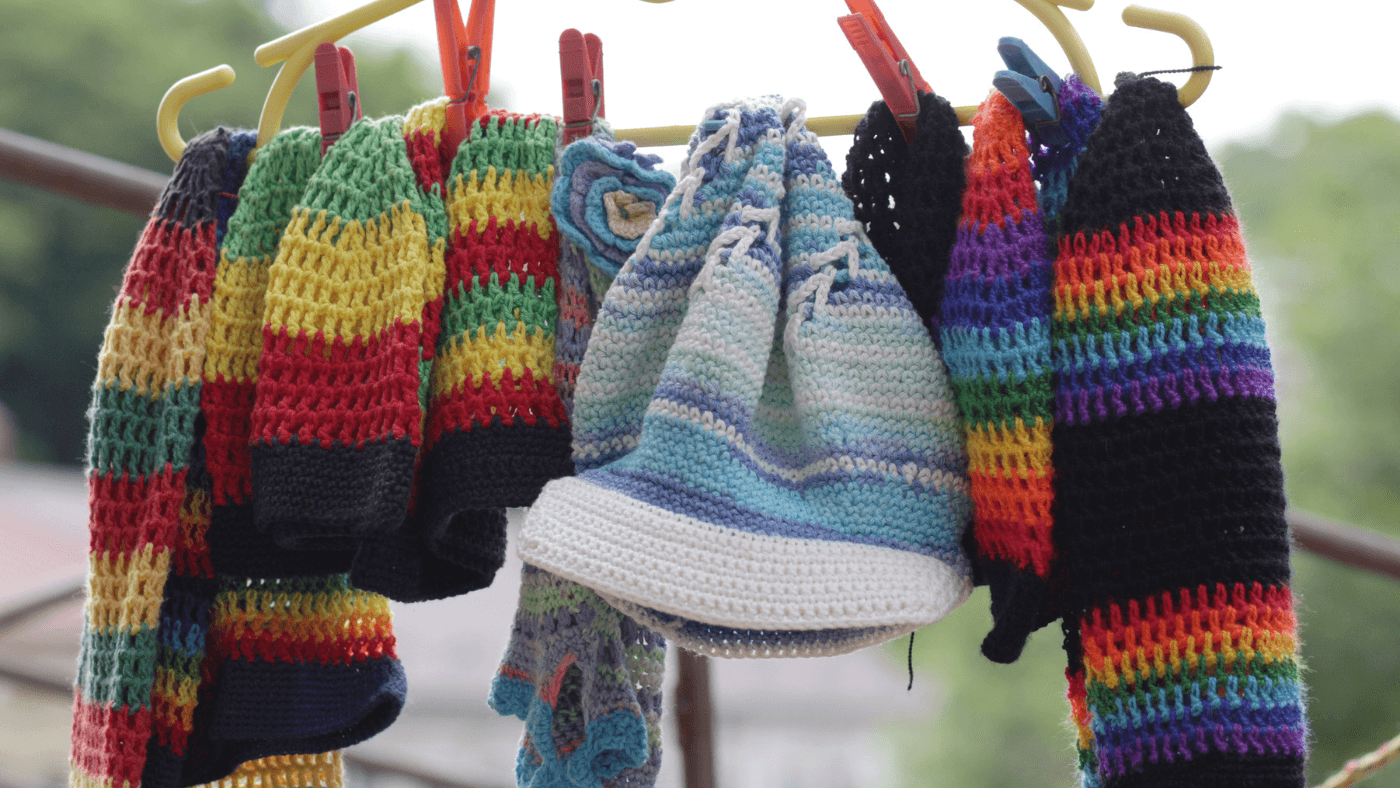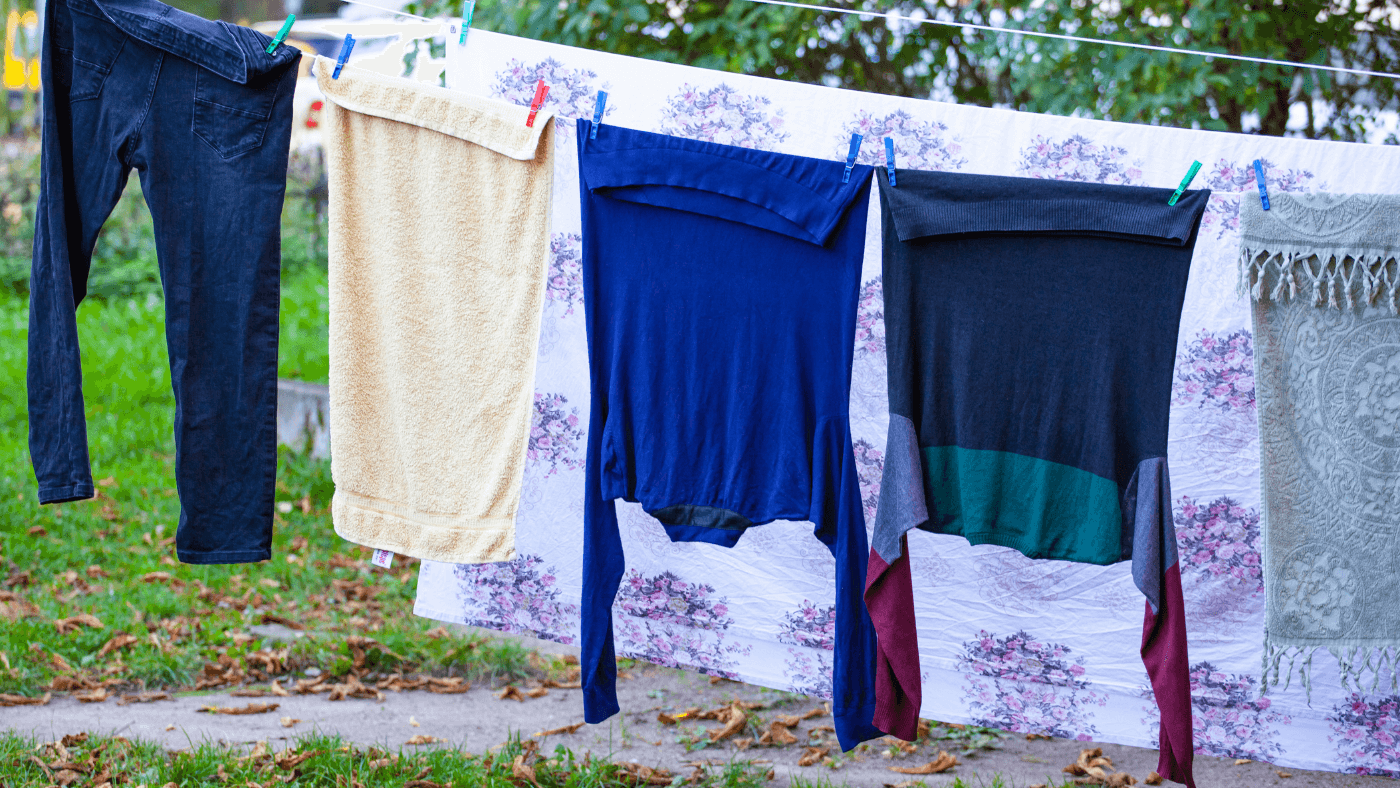
Winter is here, and with it comes the challenge of keeping our winter wear clean and fresh. In this blog post, we will guide you through essential laundry advice for winter wear, covering proper washing techniques, re-wearing, and layering strategies, caring for delicate items and accessories, and dealing with salt stains and odors. By following these expert advice for laundry, you can be sure that your winter clothes will stay in tip-top shape throughout the chilly season.
Attention: Use discount code "SHOP10" at checkout to save 10% on The Nori Press!
Short Summary
Learn proper washing techniques and advice for laundry for different types of winter clothing, such as down jackets and fleece jackets.
Re-wearing and layering strategies can help conserve resources while creating fashionable combinations.
Treat salt stains with a vinegar solution or commercial stain remover, deodorize snow boots with essential oil/water mixture or baking soda/cornstarch, and line dry clothes to retain shape.
Preparing Winter Wear for Laundry
Preparing your winter wear for laundry is essential to ensure they remain in good condition throughout the season. Before washing, always check the care labels on your winter garments to ensure you’re using the right laundry detergent and wash cycle. This step is crucial for maintaining the integrity of the fabric and preventing any damage.
Start by removing any loose dirt or debris from your clothes. This can be done by gently shaking or brushing off the garments. For any visible stains, pre-treat them with a stain remover or apply a small amount of laundry detergent directly to the stain. This will help to break down the stain and make it easier to remove during the wash cycle.
For delicate fabrics like wool or silk, consider using a mesh laundry bag. These bags protect your delicate items from abrasion and tangling during the wash cycle, ensuring they come out clean and undamaged. Simply place your delicate items inside the mesh laundry bag, zip it up, and add it to your washing machine.
Proper Washing Techniques for Winter Clothes Using Cold Water

Winter clothes often require special care and attention when it comes to laundry time. Knowing how to wash winter clothes using appropriate washing techniques, including the proper use of the rinse cycle, will not only keep your winter wear looking fresh and vibrant but also ensure that the fabric remains intact and functional. To achieve this, following some winter laundry tips can be quite helpful.
In this section, we will delve into the washing techniques for various winter clothes, including down jackets, fleece jackets, and performance clothing. Using warm water can activate laundry soap and detergent faster, making it an effective choice for routine washing and express cycles.
Down Jackets
Down jackets provide excellent insulation and warmth during the cold winter months. To keep these cozy jackets in optimal condition, it's important to machine wash them using cold water.
When it comes to drying, utilizing tennis balls can be an effective way to maintain the fluffiness of the down filling. Simply add a few tennis balls to the dryer, and they will help fluff the coat as it dries, ensuring that it stays warm and comfortable.
Fleece Jackets
Fleece jackets are another popular winter staple, known for their lightweight warmth and softness. To wash your fleece jackets, it is recommended to use regular detergent but avoid using fabric softener, as it can damage the fabric. Cold water is suggested for washing, as air-dried clothes tend to last longer.
For drying, line drying your fleece jackets is the best method to avoid fabric deterioration and follow general laundry tips for best results. If you must tumble dry, use a few tennis balls to maintain the shape and strength of the fabric.
Performance Clothing
Performance clothing is designed for physical activities like running, cycling, or playing sports. These garments are made from lightweight and breathable fabrics that wick away sweat and regulate body temperature.
Proper winter laundry care is essential for maintaining their performance. For optimal performance clothing care, a special laundry detergent is recommended, as it is specially formulated to remove sweat and odors without damaging the fabric. To dry, lay the performance clothing on a flat surface away from direct sunlight to preserve the fabric and prevent shrinking or fading.
Choosing the Right Laundry Detergent
Choosing the right laundry detergent can make a big difference in the cleanliness and longevity of your winter wear. Look for a detergent that is specifically designed for washing in cold water. These detergents are formulated to work effectively at lower temperatures, helping to prevent colors from fading and fabrics from shrinking.
Consider using a non-chlorine bleach detergent, as chlorine can be harsh on fabrics and may cause discoloration or damage. Non-chlorine bleach detergents are gentler and still provide excellent cleaning power, making them a great choice for your winter clothes.
If you have sensitive skin, opt for a fragrance-free or hypoallergenic detergent. These detergents are formulated to minimize the risk of skin irritation, ensuring that your clothes are not only clean but also comfortable to wear.
Washing Winter Wear in Cold Water
Washing your winter wear in cold water is a great way to preserve the colors and fabrics of your garments. Cold water is gentler on fabrics than hot water, which can cause colors to fade and fabrics to shrink. When washing in cold water, use a laundry detergent that is specifically designed for cold water to ensure effective cleaning.
Avoid using too much detergent, as this can leave residue on your clothes and make them feel stiff. Follow the recommended amount on the detergent label for the best results. Adding a fabric softener to your wash cycle can help reduce static cling and make your clothes feel softer and more comfortable.
After the wash cycle, promptly remove your clothes from the washing machine to prevent them from becoming wrinkled or musty. Air dry your clothes whenever possible, as this method is gentler on fabrics and helps to maintain their shape. If you prefer to use a dryer, tumble dry on a low heat setting to prevent shrinkage and fabric damage.
By following these tips, you can keep your winter wear looking fresh and vibrant throughout the season.
Attention: Use discount code "SHOP10" at checkout to save 10% on The Nori Press!
Re-wearing and Layering Strategies
Re-wearing and layering are effective strategies for extending the life of winter clothes and reducing laundry loads. By wearing jeans and jackets multiple times during the winter season, you can save time, energy, and resources, provided that they are not stained or unpleasant-smelling.
Wearing an additional layer underneath a sweater can also help preserve the freshness of the sweater and reduce the amount of washing required. Additionally, it is important to fold clothes promptly after laundry to maintain organization and motivation.
T-shirt Layering

Wearing a T-shirt under a sweater is a practical and stylish way to stay warm during the winter months. This simple layering technique not only provides extra warmth but also keeps your sweaters clean, reducing the need for frequent washing and allowing you to re-wear sweaters more often.
When layering t-shirts, begin with a base t-shirt and then add further layers, such as a blazer, denim jacket, or cardigan, to create a fashionable and comfortable ensemble. Varying proportions and fabrics can lead to interesting combinations.
Jeans and Pajamas

Jeans and pajamas can be worn multiple times before requiring a wash unless they are stained or dirty. For optimal warmth and fashion, layer a pair of jeans as the base layer and add a pair of pajama pants on top. This combination will provide both coziness and a fashionable appearance.
Furthermore, a pajama top or a cozy knit sweater can be layered over a silk camisole for additional warmth and style.
Hand Washing Delicate Fabrics for Winter Items
Delicate winter items, such as hand-knitted sweaters and scarves, require extra care when it comes to washing. Hand washing these items can help preserve their fibers and shape, ensuring that they stay looking their best for years to come. After washing, lay the item flat on a towel, roll it up to press out excess water, and then use a dry towel to further absorb moisture before hanging the item to dry.
To hand wash delicate winter items, simply use a small amount of dish soap and gently rub it into the fabric, avoiding any harsh twisting that could potentially damage the material. Once the washing is finished, rinse the item in cold water. This should remove any remaining soap residue.
Caring for Winter Accessories

Winter accessories, like hats, gloves, and scarves, also need proper care to ensure they remain in great condition throughout the season. In this section, we continue our laundry advice for winter wear including using mesh laundry bags and air drying as methods.
Using a mesh laundry bag is a great way to keep your winter accessories safe during the washing process.
A bit part of caring for winter clothes means removing lint and pilling, be sure to check out the Nori Trim, it is the best fabric shaver on the market for this job.
Netted Laundry Bag or Mesh Laundry Bag
Using a netted laundry bag is an excellent way to protect delicate winter accessories during the gentle cycle. These mesh bags with a closure device or zipper are designed to keep delicate items like hats, gloves, and scarves from getting misplaced or damaged during washing.
Simply place the items inside the bag, secure it with the attached closure device or zipper, and wash it with the rest of your laundry.
Air Drying

Air-drying winter accessories is another effective advice for laundry and method for maintaining their shape and preventing fabric damage. You can hang them near a window or use a retractable indoor clothesline for this purpose. Avoid hanging them in the basement, as it may not provide optimal drying conditions.
If the weather permits, you may also opt to air dry them outside during the winter season.
Dealing with Salt Stains and Odors

Winter weather often brings the inconvenience of salt and slush stains on our winter clothes and boots. In this section, we will discuss how to treat these stains and odors effectively to keep your winter wear looking and smelling fresh. Consider organizing your laundry room with essential tools and supplies to make the process more efficient.
Salt and slush stains can be difficult to remove, but there are a few methods that can be used to remove them.
Treating Salt Stains
Salt stains should be treated immediately to prevent fabric damage. To create a vinegar solution, combine one tablespoon of white vinegar with one cup of cold water. Apply the solution to the stain using a cotton ball and gently rub it in to remove the stain.
For lighter stains, you may opt to use a commercial stain remover or dish soap instead.
Deodorizing Snow Boots
Deodorizing snow boots is essential for keeping them fresh and comfortable throughout the winter season. To deodorize your boots, spray a mixture of essential oil and water inside and allow them to air dry. Alternatively, you can sprinkle baking soda or cornstarch inside the boots and let them air out to eliminate odors.
You can also spray vinegar inside the boots and let them air dry for an effective odor-removing method.
Air Drying Winter Clothes
Drying winter clothes properly is essential for maintaining their shape and preventing fabric breakdown and odors. Regularly emptying the lint trap is crucial for dryer efficiency and safety. Line drying winter clothes can help protect fabric structure and is an excellent method for preserving your winter garments.
If line drying isn’t possible, using a drying rack is an effective alternative for ensuring that your winter clothes dry properly and maintain their shape. Avoid pouring bleach directly on wet clothes to prevent damage and follow care instructions on clothing labels for the best results.
Frequently Asked Questions
How do you wash winter wears?
To properly care for winter clothes, check the care tag on the garment and follow any special instructions. Generally, machine-washable items can be washed in cold water with a gentle cycle. Hand-knit sweaters should be hand-washed and wool coats should be dried on low with a few tennis balls.
Wear a base layer underneath sweaters to help keep them clean and wash gloves, hats, and scarves in a mesh laundry bag.
Should I wash winter clothes before wearing them?
Yes, it is important to wash winter clothes before wearing them for the best results. Expert advice suggests that washing before wearing is the ideal move.
Which detergent is best for winter clothes?
Persil Small & Mighty Bio Liquid Laundry. Detergent is the best choice for washing winter clothes in cold water, as it provides superior cleaning and stain removal power with a reduced environmental impact.
It is formulated with biodegradable surfactants and is free from phosphates, optical brighteners, and chlorine. This makes it a great choice for those looking to reduce their environmental impact while still getting great results.
The detergent is also designed to be environmentally friendly.
How many times can you wear clothes before washing in winter?
Shirts, tank tops, and camisoles should be washed after each wearing; dress shirts and khakis can be worn a few times; jeans can typically be worn 3 times before washing; pants and sweaters can stand about 5 wears; t-shirts and Henleys are good for 1-2 wears; and sweaters can go up to 6 wearings if worn with an undershirt.
It is important to note that the number of times an item of clothing can be worn before washing depends on the type of fabric and the activity level of the wearer. For example, if you are very active, you may need to wash your clothes more often than someone who is less active. Additionally, certain fabrics may require more frequent washing than others.
How can I keep my sweaters fresh without washing them frequently?
Layering an undershirt underneath your sweater can help reduce the amount of washing required to keep it fresh.
Summary
In conclusion, proper laundry care is essential for keeping your winter wear in pristine condition throughout the cold season. By following the essential laundry advice for washing and drying winter clothes, re-wearing and layering strategies, hand washing delicate items, and caring for winter accessories, you can ensure that your winter wardrobe remains fresh, comfortable, and ready to keep you warm. Stay cozy and stylish this winter by giving your clothes the care they deserve, along with using the Nori Trim and the Nori Press! Shop now.








